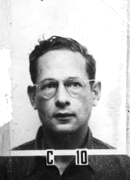Introduction
The intended purpose of biological and chemical weapons is to fundamentally endanger lives. However, biological agents are ineffective as military weapons, but seen as a global threat to the human species. Chemical weapons have limited uses so they are considered weapons of terror more so than a military weapon albeit still harmful. The thought of such weapons ever possibly being deployed induces fear, uncertainty in everyday life and large scale panic. Weapons with such mentally and physically destructive consequences, one would unquestionably turn down the idea of such weapons and want them banned, however biological and chemical weapons are great for self defense, relatively easier and cheaper to produce, and logistically more detrimental to the targeted enemy.
Disadvantages
The disadvantages of biological and chemical weapons are much more evident than the advantages. One of the many drawbacks of biological weapons is their unavoidable lasting effect. Once it’s out, the weapon has the potential to unleash massive epidemics of deadly infectious disease. An example being smallpox which we no longer immunize against making it near impossible to stop. If smallpox was released among the unsuspected public again, it could wipe out millions as it is randomly passed from person to person.
On top of its lasting and catastrophic effect, biological and chemical weapons are awfully easy to get in the wrong hands and used for terrorist attacks and other non-beneficial uses. Anyone with a few years of training in chemistry and access to raw materials could easily produce a weapon like sarin gas. Although the possibility of someone on the street could do this seems rather unlikely, it isn’t too hard to hire a chemist with some level of training and easily pull off a deadly attack. Considering how easy it is to produce, it’d be expected to see more terrorist attacks with chemical weapons. However, of those who try to make it, if they do not know what they’re doing, are likely going to die in the process. Despite its low level of difficulty to produce, it is not easy to be successful. The last and most successful attack was in March 1995. Five members from the cult movement Aum Shinrikyo released sarin, a toxic nerve agent, on three lines on the Tokyo Metro during rush hour killing 12 people, severely injuring 50 and causing temporary vision problems for nearly 5,000 others. In a confined space with a large number of people, the subway was the ideal location for the use of chemical weapons.
While biological and chemical weapons are easy to obtain and hard to keep under control, the most toxic trait might be its associated psychological effects. With the mere thought of such weapons to ever be deployed, it is no surprise to see large scale panic in people. The weapons induced malaise, fear, and anxiety on everyday life which may remain high for years on after. This can exacerbate pre-existing psychiatric disorders and the risk of mass sociogenic illness. One example of mass sociogenic illness is a bioterrorism attack at a Washington middle school in September 2001. Paints fumes were released which sent 16 students and a teacher to the hospital. In the following month, over 1,000 students in several schools located in Manila, Philippines flooded the local clinics with ordinary flu-like symptoms after rumors spread via text message alerts. The rumors stated that these symptoms were a result of a bioterrorism attack. In the next few days, a man sprayed an unknown substance into a Maryland subway station which resulted in 35 people reporting symptoms of nausea, headache, and sore throat. The substance turned out to be window cleaner.
Advantages
Despite all the disadvantages over biological and chemical warfare, there are advantages to having these weapons around. Although most countries use it for attacking other countries, biological and chemical weapons are useful for self defense. Another country will be less likely to attack another if the possibility of being attacked in return is probable. Also for its similar destructive power, it is much cheaper and easier to build than the conventional bomb. This is great for nations who want to reduce their budget for defense. Some call these weapons a “poor nation’s atomic bomb” which is quite fitting. As inhumane biological and chemical warfare can be, it can be considered optimal. To wound one individual, which would require two others’ attention and care from the enemy’s side, is more detrimental than attempting to kill one individual.
Discussion
Chemical and biological weapons’ effects often stay around for much longer than we desire. They don’t hold up to the conventional explosive weapon. Drop a conventional weapon, it explodes and shrapnel is released. The damage is done and over relatively faster. But with certain biological weapons, we lose all control once it’s been released and it can go on for an unwanted amount of time. Along with biological warfare being unmanageable, it will affect people that were not targets thus even incapacitating innocent civilians. Once the knowledge of how to produce a weapon like this is out, it’s easy to get into the wrong hands. Rather than used as defense for a country, these weapons can be used against one’s own country. The unnerving thought of an attack ever possibly occurring can be haunting not just on individuals, but on entire societies. The attack in the Washington middle school and incident in Manila is a prime example of mass sociogenic illness. The lasting effects of mass sociogenic illness serve as a reminder of the dangers of unintentionally amplifying the psychological responses to biological and chemical weapons. On top of worsening the psychological responses, it worsened already existing psychological issues as well. These weapons were created with the intention to inflict injury, cause disease, and to kill humans. However, little did we know it would stick around like an guest who overstayed their welcome, easily be used to hurt rather than protect one’s country and worsen an entire society’s psychological response.
Conclusion
Biological and chemical weapons have their advantages and disadvantages. Some might see biological and chemical warfare as a gateway to complete havoc and just simply inhumane; some can see the advantages albeit there are not too many. Seeing how many disadvantages there are compared to number of the advantages of these weapons, the best option might seem to be simply ban weapons of this sort and make illegal. But how effective is that? Just because there’s a rule saying no more biological and chemical weapons, it doesn’t necessarily mean people are going to listen. Once the knowledge of how to produce these weapons gets out, there is no getting it back. It becomes a matter of how to prevent this — not how to stop its existence entirely.
- https://www.npr.org/2013/05/01/180348908/why-chemical-weapons-have-been-a-red-line-since-world-war-i
- https://www.ncbi.nlm.nih.gov/pmc/articles/PMC1121425/
- https://www.ncbi.nlm.nih.gov/pmc/articles/PMC1732455/pdf/v057p00353.pdf
- https://chicagounbound.uchicago.edu/cgi/viewcontent.cgi?article=1193&context=cjil
- https://www.wagingpeace.org/chemical-and-biological-weapons-use-in-warfare-impact-on-society-and-environment/
- https://www.news-medical.net/health/Smallpox-Biological-Warfare.aspx
- https://www.rt.com/op-ed/chemical-weapons-training-attainable-740/


